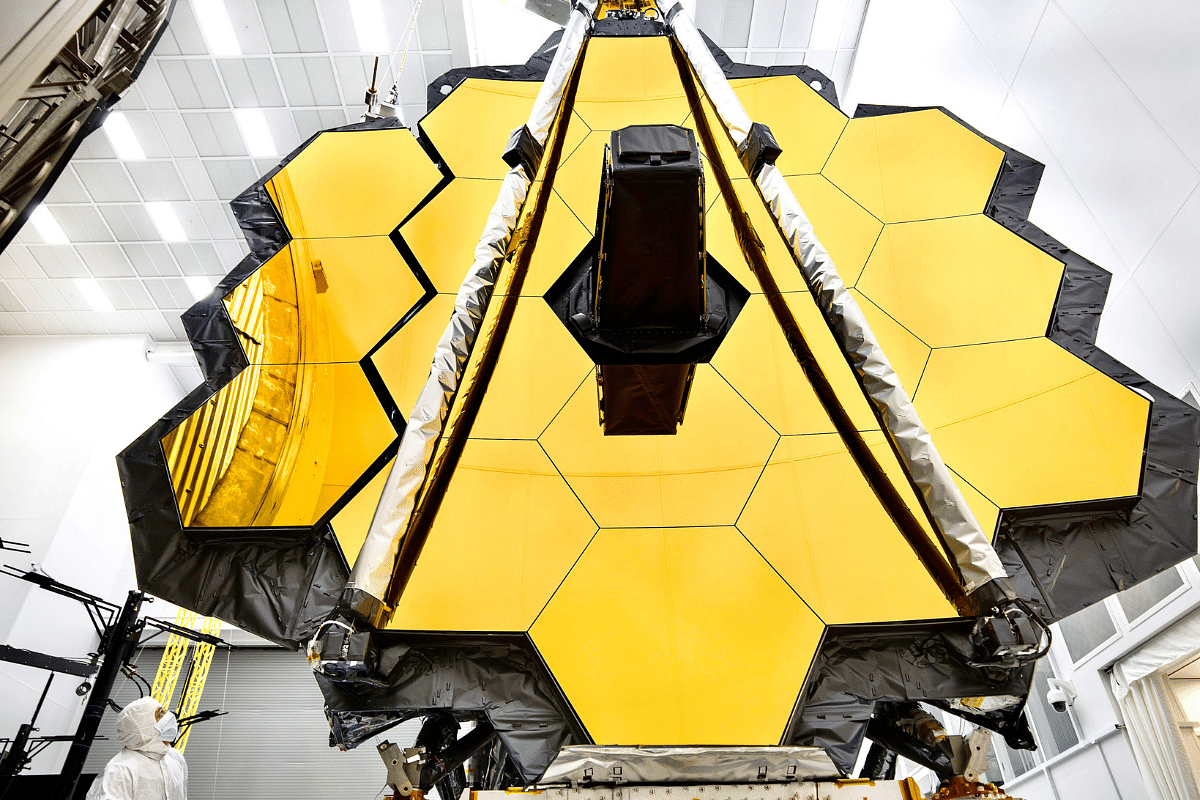Science
James Webb Space Telescope Set For Launch On 24 December
- The James Webb Telescope will now launch on Christmas eve, after a "communication issue" set the launch date back by two days.

The James Webb Space Telescope will take off on the new launch date of 24 December. (Photo: NASA Webb Telescope/Twitter)
Update: Webb lifted off on 25 December 2021.
After a couple of delays, the world's largest and most powerful space telescope is set for launch at 7.20am Eastern Standard Time (5.50pm Indian Standard Time) on Friday, 24 December.
The James Webb Telescope was earlier scheduled to launch on 22 December, but a "communication issue" set the date back by two days.
"The James Webb Space Telescope team is working a communication issue between the observatory and the launch vehicle system," an official update said. However, a confirmation of the new launch date came four days later, on 18 December.
"Late yesterday, teams at the launch site successfully completed encapsulation of the observatory inside the Ariane 5 rocket that will launch it to space," the United States space agency National Aeronautics and Space Administration (NASA) said.
Lined up is the final launch readiness review on 21 December and, if everything's good to go, a planned roll-out the next day. The launch will follow two days later, on the eve of Christmas.
This is the second launch delay. Webb was previously set to launch on 18 December, but an incident during Webb’s launch preparations led to the need for additional testing of the observatory.
Webb will take off from Europe's Spaceport in French Guiana on board a rocket made for the job, the French Ariane 5 launch vehicle.
NASA is one of three collaborators working on this telescope project. The other two are the European Space Agency (ESA) and the Canadian Space Agency. Together, they are building the next great space science observatory, in the style of the Hubble Space Telescope and Herschel Space Observatory.
However, Webb will be a massive upgrade—its mirror, 6.5 metres across and made up of 18 hexagonal, gold-coated mirror segments, is nearly double the size of the Herschel observatory, and its sensitivity is 100 times greater than that of the Hubble telescope.
In addition, while Hubble has been operating primarily in the visible light spectrum, Webb will use infrared vision. Joining forces with Hubble, Webb will be able to help uncover new details about the universe and transform our understanding of our vast cosmic residence.
Webb will allow scientists to directly observe the first stars and galaxies forming in the early universe from more than 13.5 billion years ago—a period not long after the Big Bang.
When the light from these objects falls upon Webb, the observatory will capture this information that was coded all those many years ago. It will give the effect of looking far back in time, acting essentially like a time machine.
Data taken from Webb will shed light on the workings of black holes in the early universe — especially their formation and evolution and how, if at all, they contributed to the making of the universe over time.
Questions of the lifecycle of stars, galaxies, formation and evolution of planetary systems (including our solar system), and exoplanets, as well as of possible life-producing ingredients that may be found, say, in the atmospheres of exoplanets, will be explored as well.
After its launch end of this week, it will take Webb just under a month to reach its destination—the Lagrange point 2—and six months before it can begin collecting scientific data. Immediately after, the first science images will begin to trickle down to the scientific community and the wider public.
Carrying a $10 billion price tag, Webb is sure to run at least five years, though scientists hope it will last beyond its design life and stay productive up to 10 years — just as Hubble and other space probes in the past have stayed on longer than planned.
(Read a more detailed Swarajya report on the James Webb Telescope.)
Introducing ElectionsHQ + 50 Ground Reports Project
The 2024 elections might seem easy to guess, but there are some important questions that shouldn't be missed.
Do freebies still sway voters? Do people prioritise infrastructure when voting? How will Punjab vote?
The answers to these questions provide great insights into where we, as a country, are headed in the years to come.
Swarajya is starting a project with an aim to do 50 solid ground stories and a smart commentary service on WhatsApp, a one-of-a-kind. We'd love your support during this election season.
Click below to contribute.
Latest